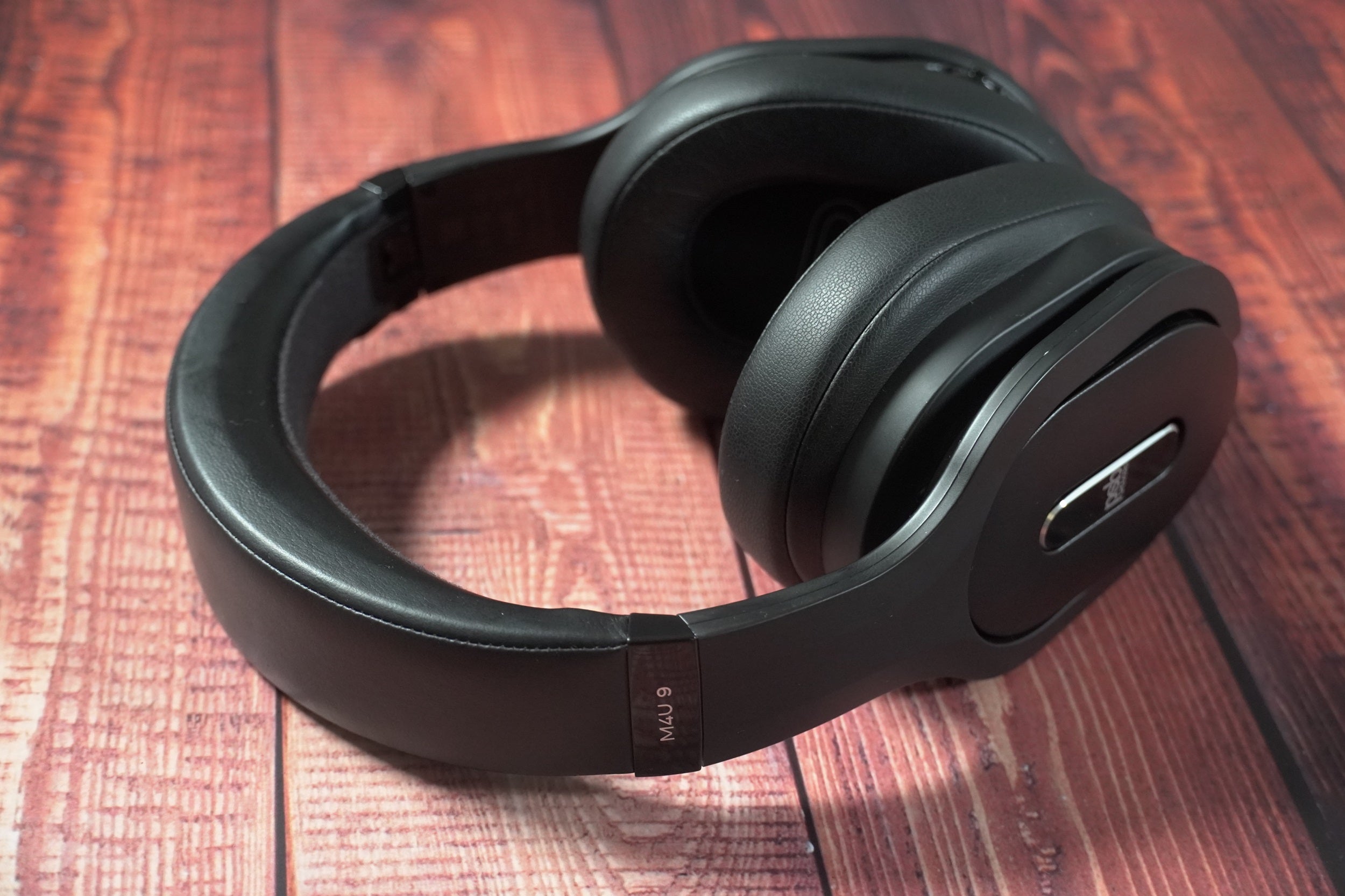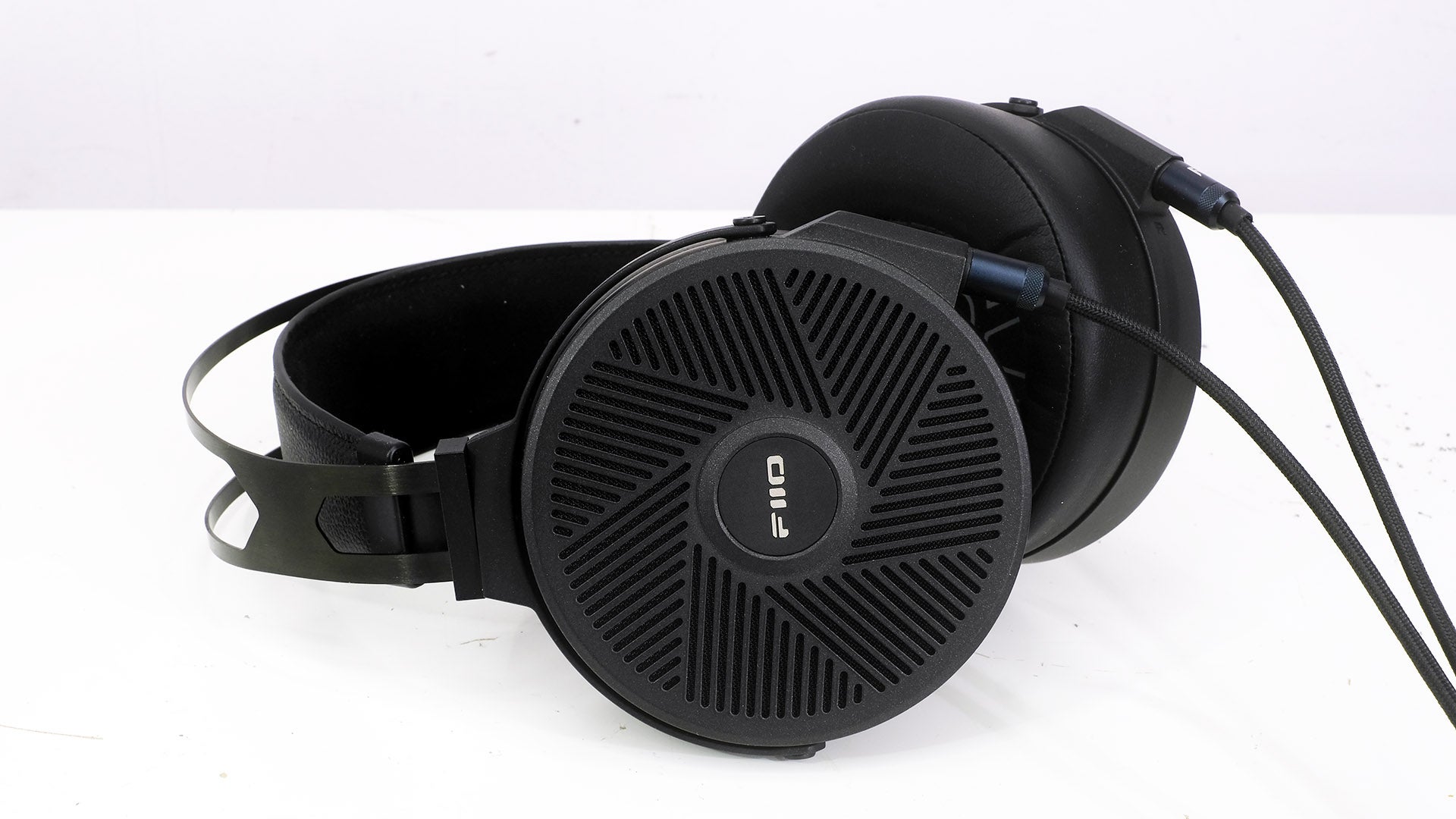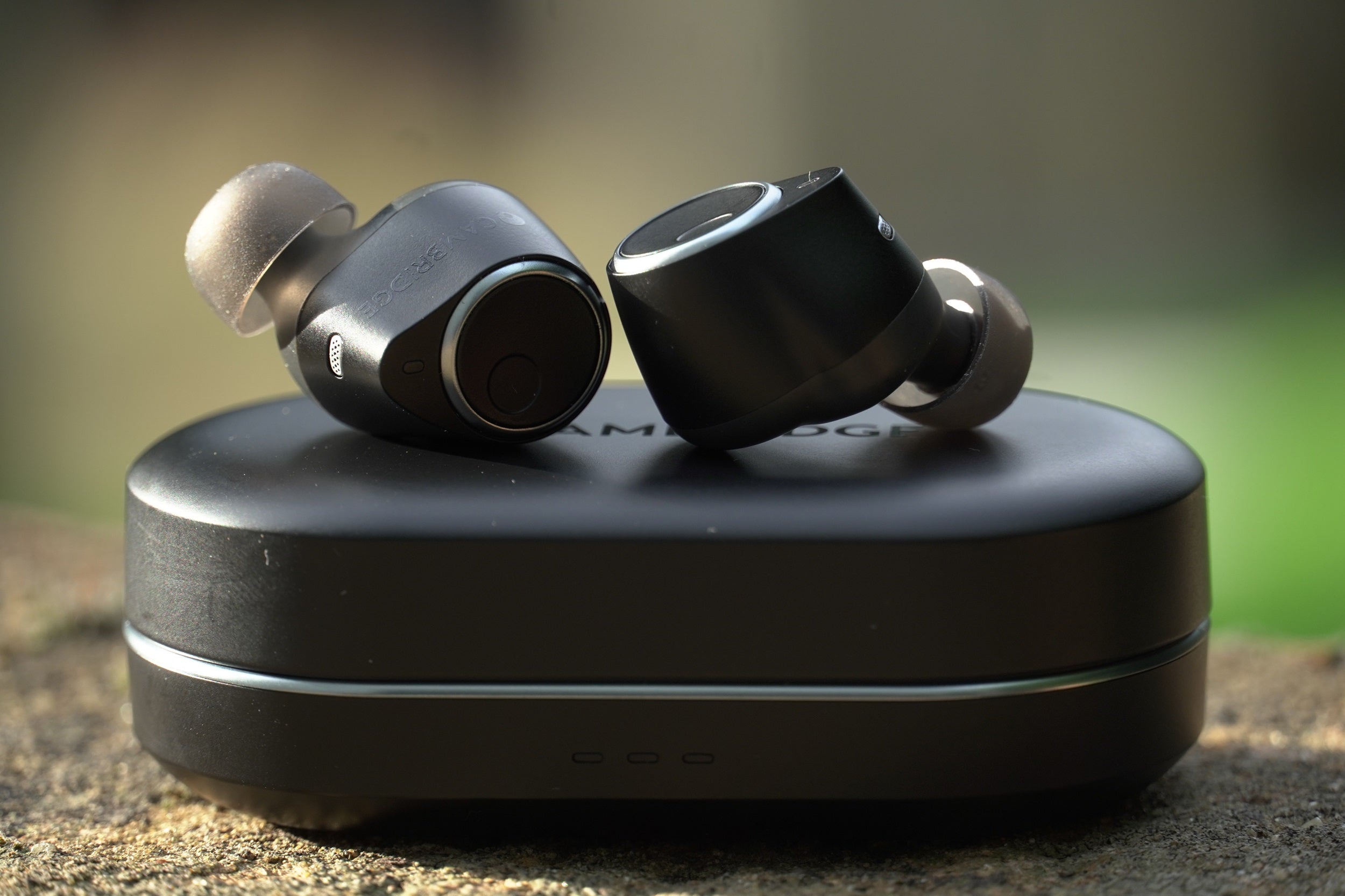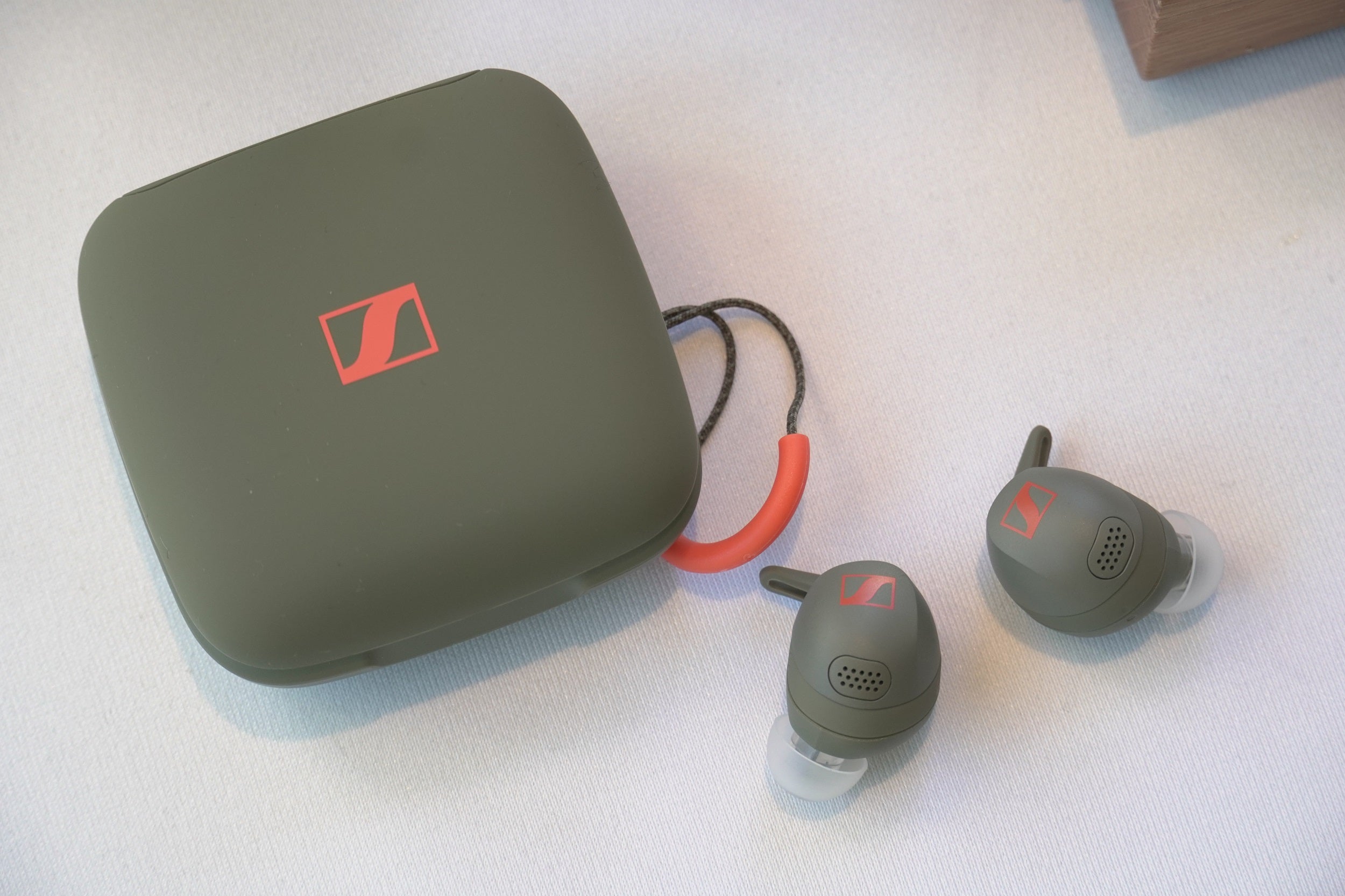Dyson Zone Review
Undoubtedly weird, but also impressive pair of headphones
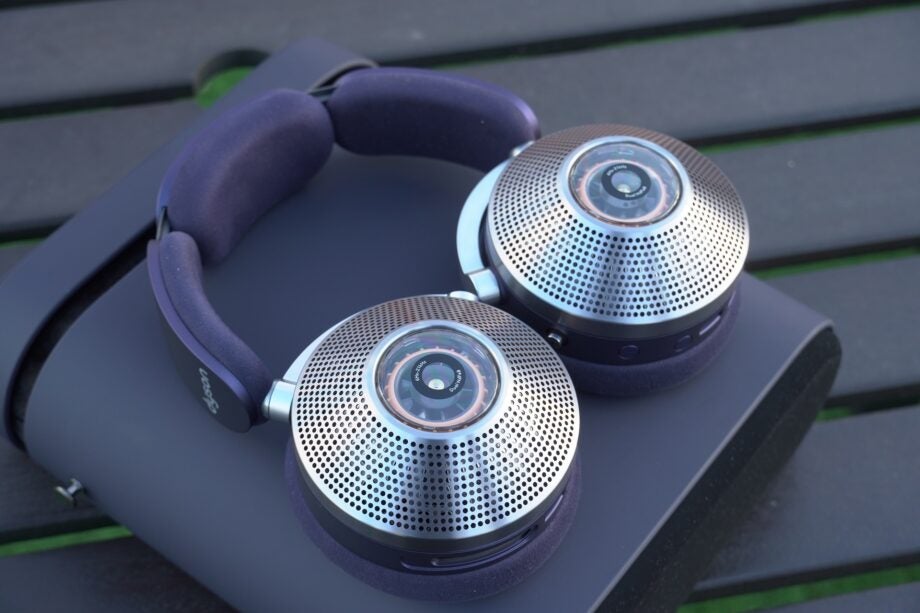
Verdict
Fresh air and fresh tunes? Step right up to the Dyson Zone, the strangest headphones (or wearable) you’ll see. Technically they’re excellent, from the wireless performance to the sound quality, noise-cancellation and, yes, air filtration system. But they won’t be for everyone, and their bulkiness and price is a lot to bear with, especially when it comes to portability.
Pros
- Balanced, neutral audio
- Very good noise-cancelling
- Flawless wireless performance
- Airflow filtration works
- Stylish looks (without the visor)
Cons
- Bulky and heavy
- Not exactly the easiest to transport
- High price
- Not the most discreet to wear with visor
Key Features
- Air filtration unitBuilt-in filters that capture city pollution and purify it
- AudioSupports SBC, AAC and LHDC
- My Dyson appKeeps track of air and noise pollution levels
Introduction
When it was first announced just before April 1, 2022, we all thought that the Zone headphones were an attempt at an April Fool’s joke. As far as Dyson was concerned, it was completely serious about its first ever pair of headphones.
The Dyson Zone is genuinely unique. To even call them a pair of headphones is misleading, as with their air purification system they’re more within the wearable category than anything else.
Everything about this ‘wearable’ screams that it shouldn’t really work, but they kind of do.
Availability
- UKRRP: £749.99
- USATBC
- EuropeTBC
- CanadaTBC
Currently you can purchase two versions of the Dyson Zone. The Prussian Blue version is available from Dyson Direct and other third-party sellers. This version comes with extra accessories such as a different case, an In-Flight adaptor kit (which isn’t available with every version) and a soft case. That is price at £749.99
Then there’s the Dyson Zone Absolute+, which is the version reviewed here. It comes with Prussian Blue+ copper finish. You get an extra set of filters, and the Quarter Turn travel case for £819.99. This version is exclusive to Dyson Direct and Dyson Demo stores.
Design
- Replaceable air filtration filters
- Big and heavy
- Detachable visor
There’s no getting past the Dyson Zone’s weight. They weigh 595g which increases to 670g with the visor attached and you can feel that weight when picking them up. They’re so big I can see them in my peripheral vision.
That said, I didn’t feel as overwhelmed as I expected when wearing them on my head. I could feel their presence on my head constantly, and for some that’s not what you’d want – the best headphones melt away in use, and wearing the Zone felt as if I had to straighten my posture like a headteacher making you aware of your poor form. After a while I got used to it, but these aren’t headphones I’d want to wear for hours on end.
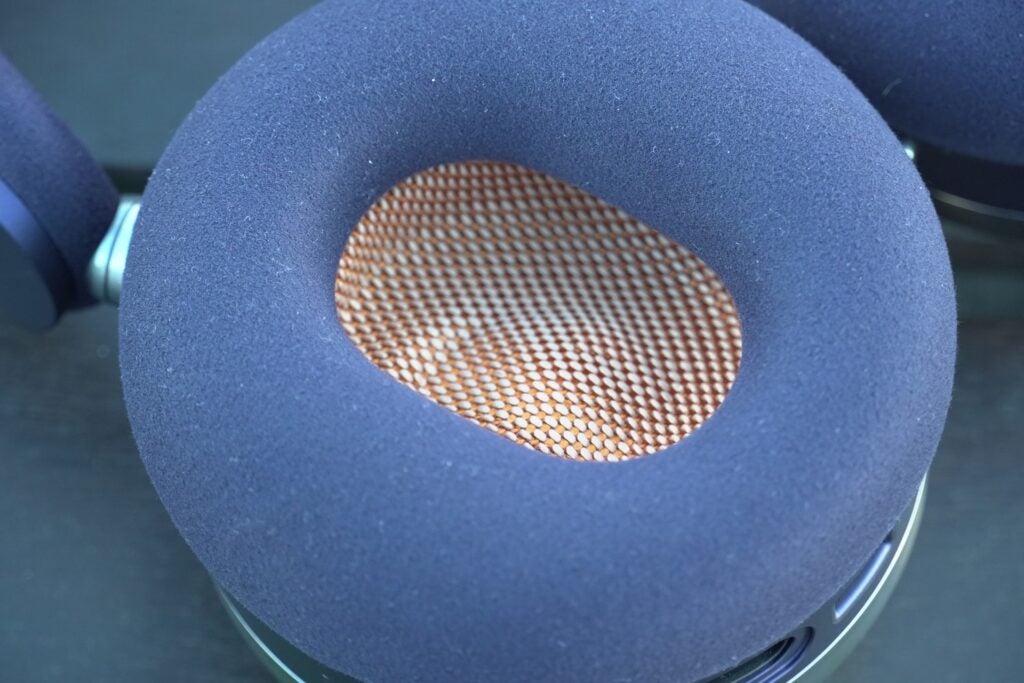
They are surprisingly comfortable despite their size. The padding here is very generous, soft, and pliable around the ears and on top of the head. However, those with smaller heads may find the size simply swamps their heads. There’s also a bit of slip and slide while wearing them, and despite the abundance of padding the seal is not the tightest. This is especially noticeable when walking down stairs, escalators or even bumps during a bus ride
The most talked about feature is the visor. It can be attached (or detached) through magnets – simply move them towards the earcups and they’ll attach, while pulling them off doesn’t require much exertion at all. It can be extended or reduced to better fit your face, and note that the visor doesn’t touch your face, it just sits in front of your mouth/nose.
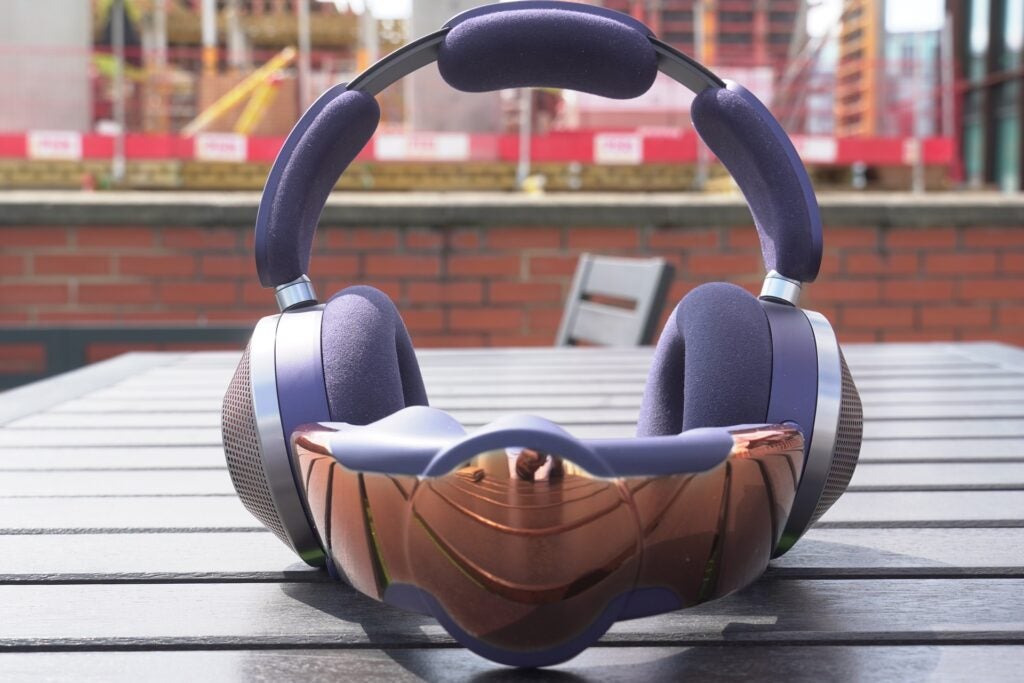
Visually having both these items on together makes you look like Ant-Man, and I’m still not entirely sure about the aesthetics of the visor. The reflective, glossy surface makes them look a little too cheap for my liking. A more subdued colour or just non-reflective surface would have been less eye-catching.
There are perforated holes across the surface of earcups which are needed to draw the air in via the compressor motor, which then passes it on to the visor. The earcups can be detached to replace the filter inside (more on that later), with each one able to last up to 12 months before it needs changing.
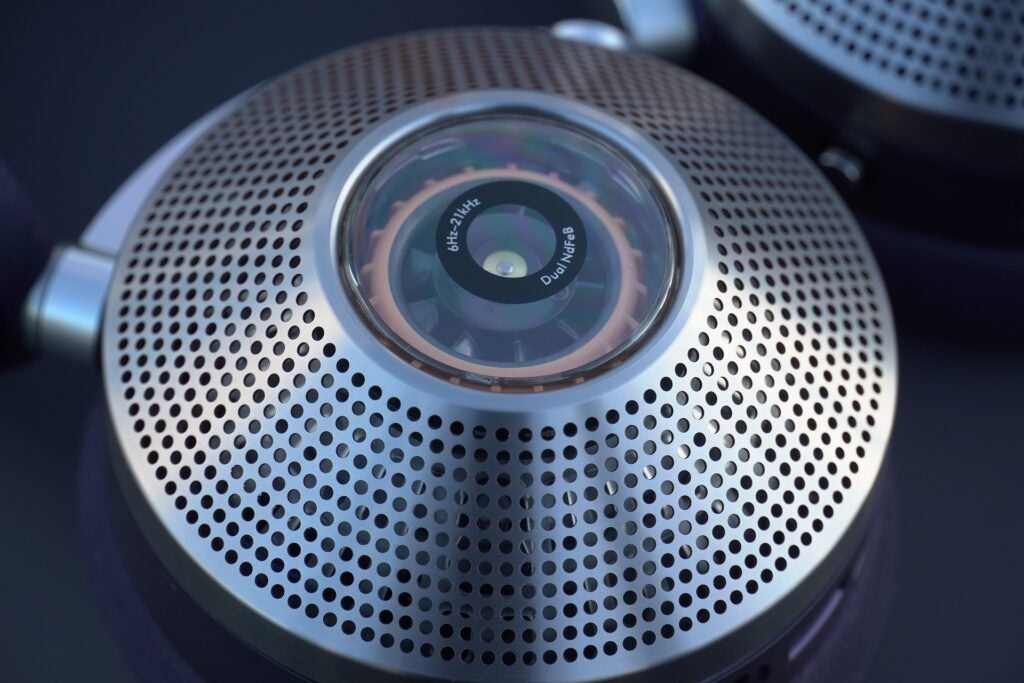
In terms of operation, a double tap in the centre of the earcup activates the transparency mode/noise-cancelling. This works most of the time, though I’ve found it’s not always the most prompt in drawing a reaction. The same can be said for the rest of the controls with a small Marshall-like multi-directional knob to operate volume, playback and track skipping. Nudging it up or down for volume, or side-to-side for skipping does not always bring out the response required.
On the other earcup is another multi-function button that controls power, airflow, and Bluetooth pairing. With the visor attached, it’s the button to tap to go through the various airflow speeds, which all perform well enough. Strangely, powering the headphones off sends them into Bluetooth connection mode before turning off completely.
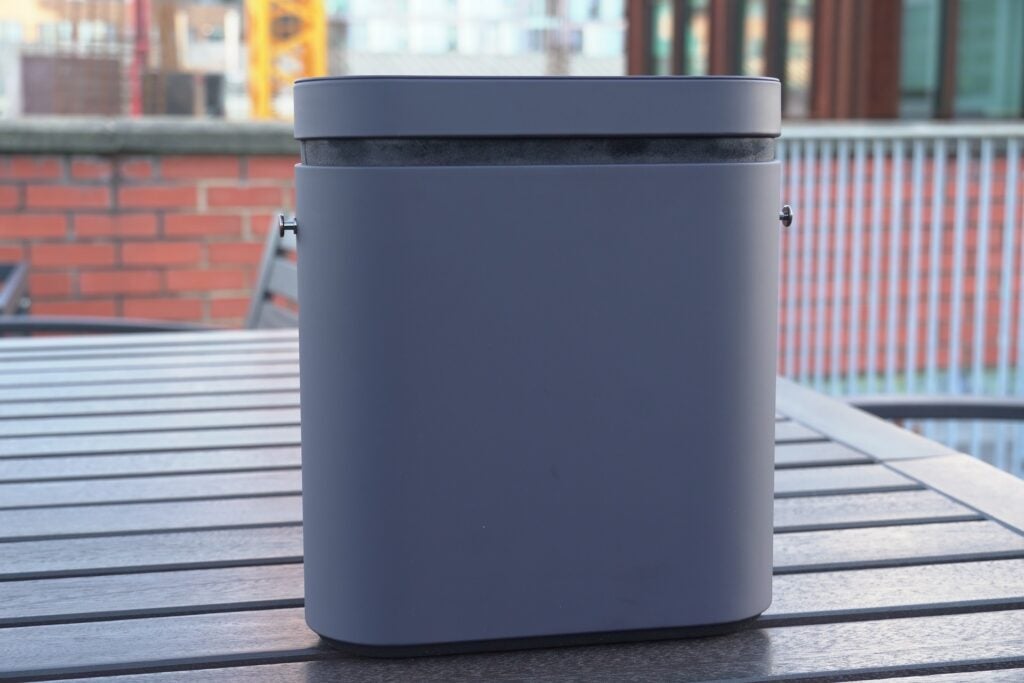
The headphones come in Ultra Blue/Prussian Blue, Prussian Blue/Bright Copper, and Satin Blue/Ultra Blue combinations. Accessories include a visor cleaning brush (the answer to what you do when you sneeze), a pair of electrostatic carbon filters, USB-C charging cable, Visor sleeve and a Quarter Turn hard case.
The case is, like the headphones, massive and not one to pack among your luggage on a holiday. Even trying to put them in a travel bag saw the case take up half the space for my clothes!
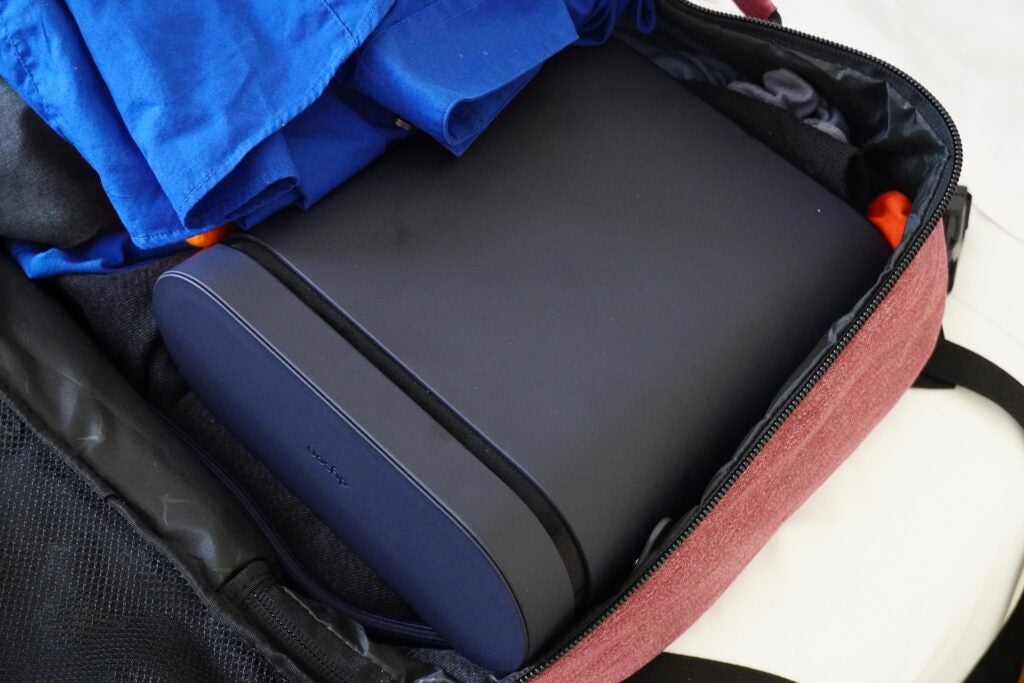
Features
- Impressive noise cancelling
- Airflow filtration
- User-friendly companion app
Inside the Dyson Zone are 11 microphones, eight of which are responsible for noise cancellation, two for noise reduction (for calls) and one for picking up your voice. The ANC can dispel up to 38dB of noise (total attenuation is claimed to be 40dB in total with passive noise reduction of the earcups), with the headphones’ sensors monitoring its surroundings at 384,000 times a second.
The noise-cancellation is impressive, and although I wouldn’t say it’s quite Bose QuietComfort 45 or Sony WH-1000XM5 levels of suppression, it’s not far off either. Most sounds fade away with the headphones on, cutting down on engine noise from vehicles, while persistent sounds are pretty much eradicated and ambient noise is brought down to minimal levels.
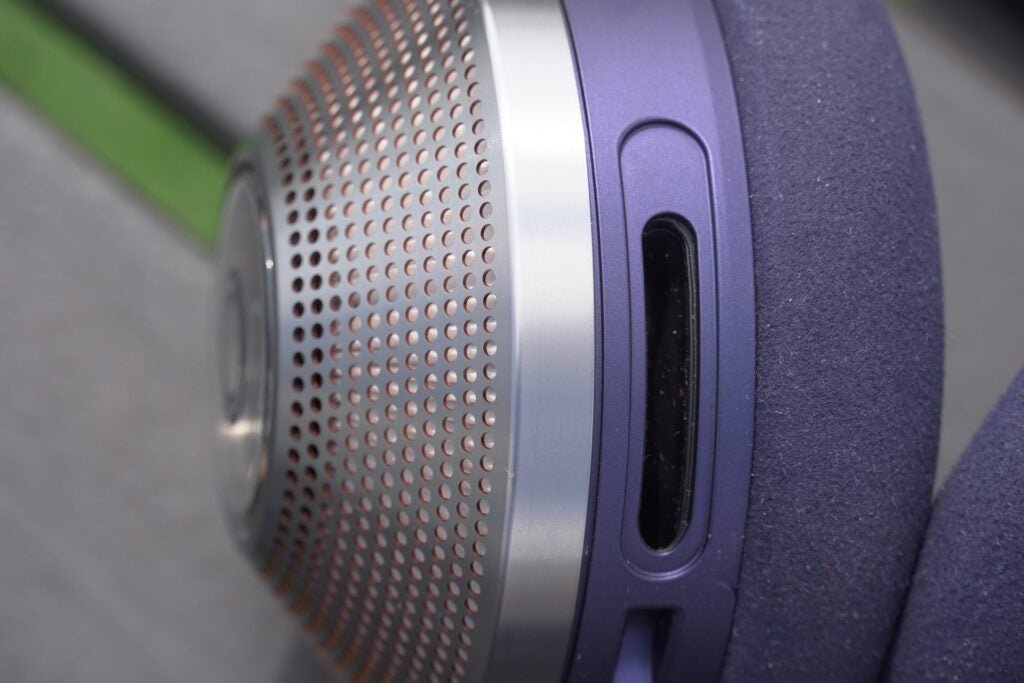
I’ve always found the best way to judge noise-cancelling with headphones is to take them off and hear how loud the environment around you is, and when I take the Dyson Zone off, I’m always surprised by just how loud the world around me is.
With people’s voices the Zone isn’t quite as conclusive in dismissing it as it is with general noise. On a train people’s voices were less noticeable for sure, but still audible. The Bose, by comparison, trains its sights on voices and has a bit more impact on them – at times when there’s a loud voice nearby the Zone doesn’t quite squash them as effectively.
The transparency mode is excellent and exactly what you’d want. Clear, natural-sounding as well as big and open. As well as the noise cancelling keeps sounds at bay, the transparency mode lets those sounds filter through.
Then there’s the filter/visor attachment. With the visor on and the airflow being pushed through there is the whir of the motors to contend with. The filter can capture gases such as NO2, SO2, and O3 (the latter is Ozone, which is harmful), purify the air and filter it to your mouth.
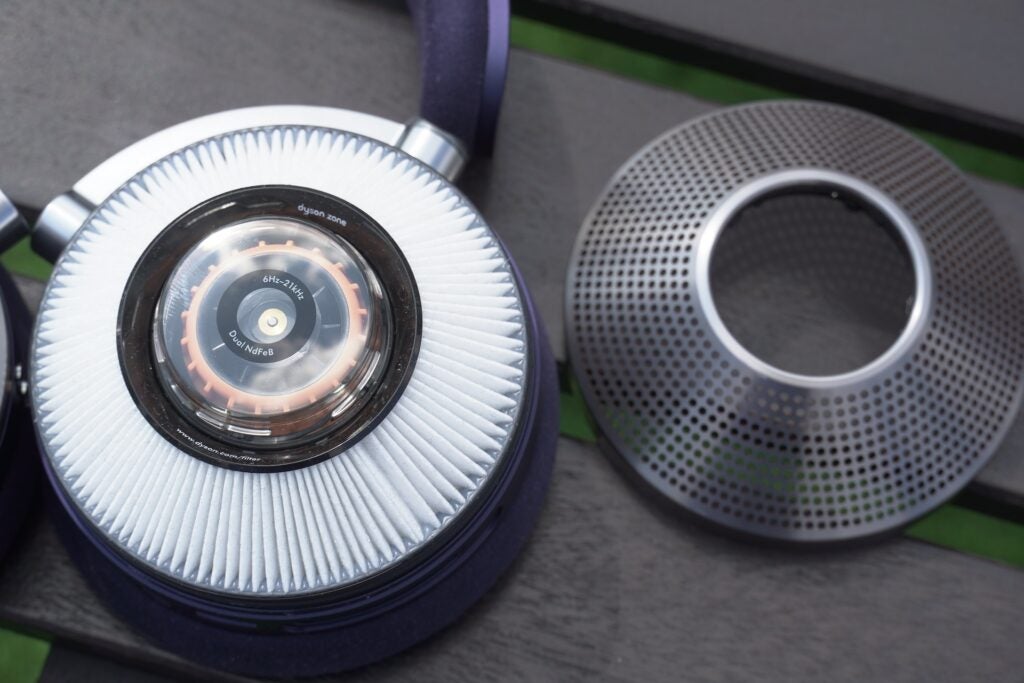
As soon as the visor is attached the motor starts running, and it’s quick to start and quick to stop when the visor is attached/detached. I have to admit that I’ve not used the visor too often in public, as I find myself becoming very self-conscious and for someone who prefers to keep a low profile, wearing this makes me hard to miss.
Considering what it’s doing the fans aren’t as loud as you might think, as ANC is always on when the visor is attached, and there are no vibrations felt from the fans either. The fan noise will be an issue for some and sometimes I notice it, other times I was too invested in something else, but by having control over the flow rate you can reduce its impact.
Bluetooth 5.0 is supported, and wireless audio codecs include SBC, AAC and LHDC. The latter is supported by several brands in Asia where it’s picking up traction. It’s a shame LDAC wasn’t added to the list of codecs considering its embedded in Android mobile OS.
The stability and reliability of the wireless connection is virtually flawless. I’ve had no problems with the signal wherever I was walking. In all the usual busy places I walk through (Waterloo, Victoria, Soho), the Dyson Zone glided through with no issues.
One aspect I couldn’t fully test was the battery life. The Dyson Zone has wear sensors that pause music when it’s not on your head (which is one of the most accurate I’ve come across). But the problem with this is that they won’t play audio at all when they’re off. Press play on your source and even though it looks like it’s playing each track, there’s no sound coming through the headphones. Very cool, but also not helpful for a battery drain test.
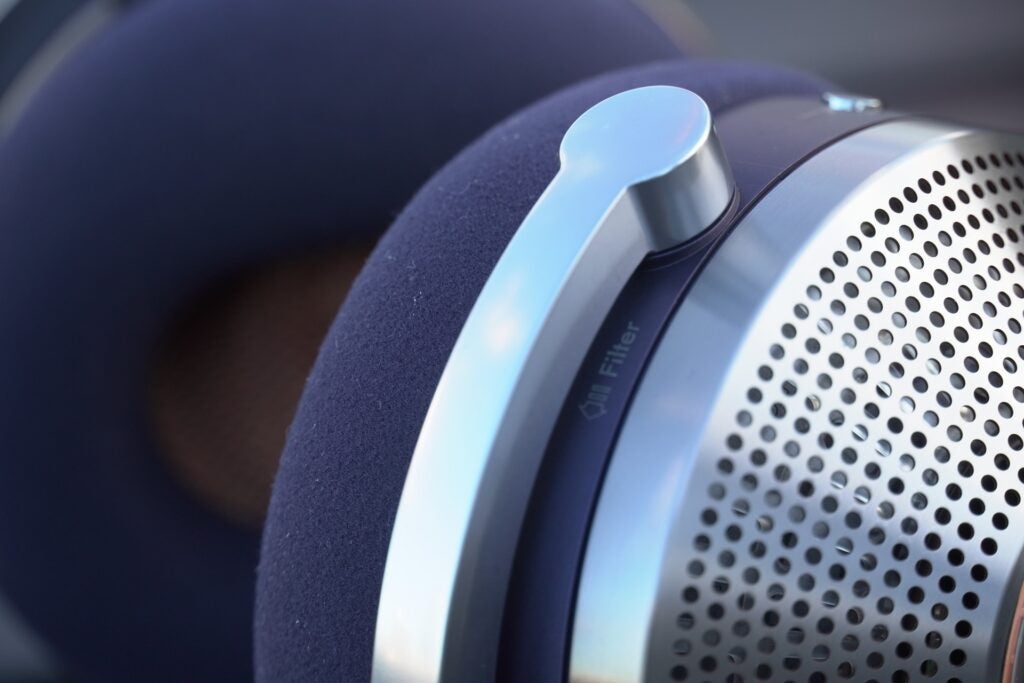
Dyson claims Battery life is up to 50 hours with noise cancellation on, which puts it around the Technics EAH-A800 (50 hours) and Sennheiser Momentum 4 Wireless (60 hours). Though I’d say that with the volume raised – and raising the volume is a certainty, as I’ll get to later – that figure falls.
Add the visor and battery life falls even more. According to Dyson, it’s four hours at Low flow (the rate at which is being filtered through), 2.5 hours at Mid flow and 90 minutes with High flow purification speeds. Charge time from zero takes three hours.
There is a companion app supported in the My Dyson app and for tech nerds it allows you to see what all the sensors and microphones on the headphones are doing, giving a lot more data than you’d get from a ‘normal’ pair of headphones and why the wearable tag seems spot on in describing the Dyson Zone.
An account for the My Dyson app is needed, and once you’re in you can see how much noise you’re being hit with, both within the ear and from outside, with the app telling you whether the noise has gone past the recommended limit.
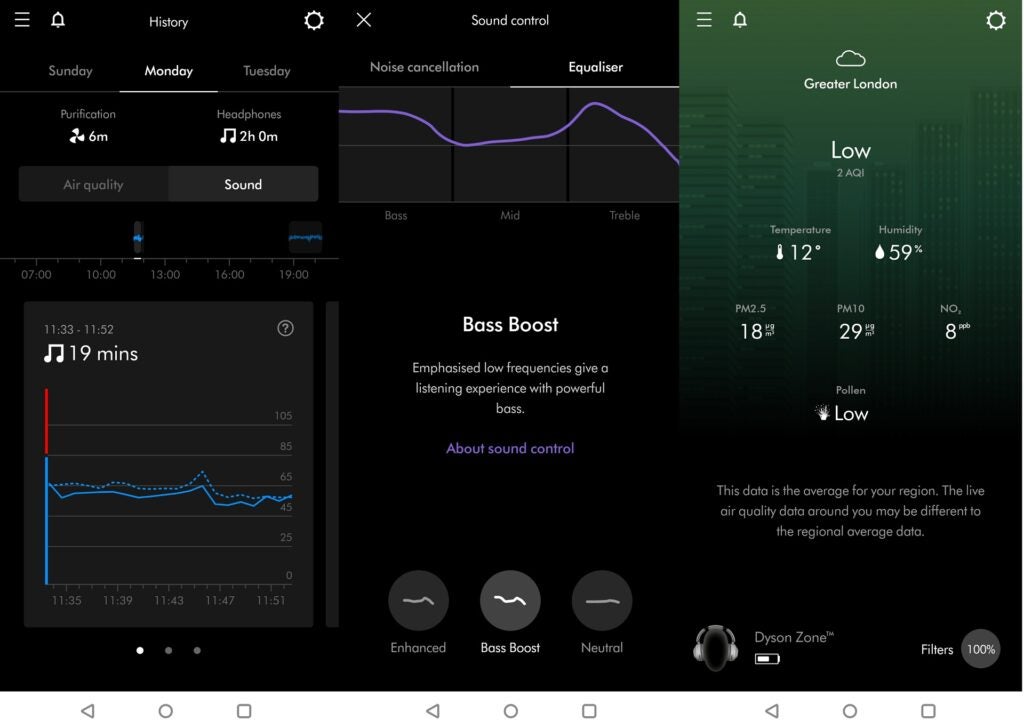
However, I’m not convinced it’s completely accurate. Most of the time it told me that in-ear dB noise was louder than external levels, which doesn’t seem right when I used them on a plane and the Tube. Despite how comfortable the earpads are, I don’t think the seal created is the tightest, at least not on my head.
The app can also show the Nitrogen Oxide levels around you, as well as the remaining life of the filters inside the earcup. Apparently, the levels of a bus heading home reached orange levels, which was disconcerting to say the least.
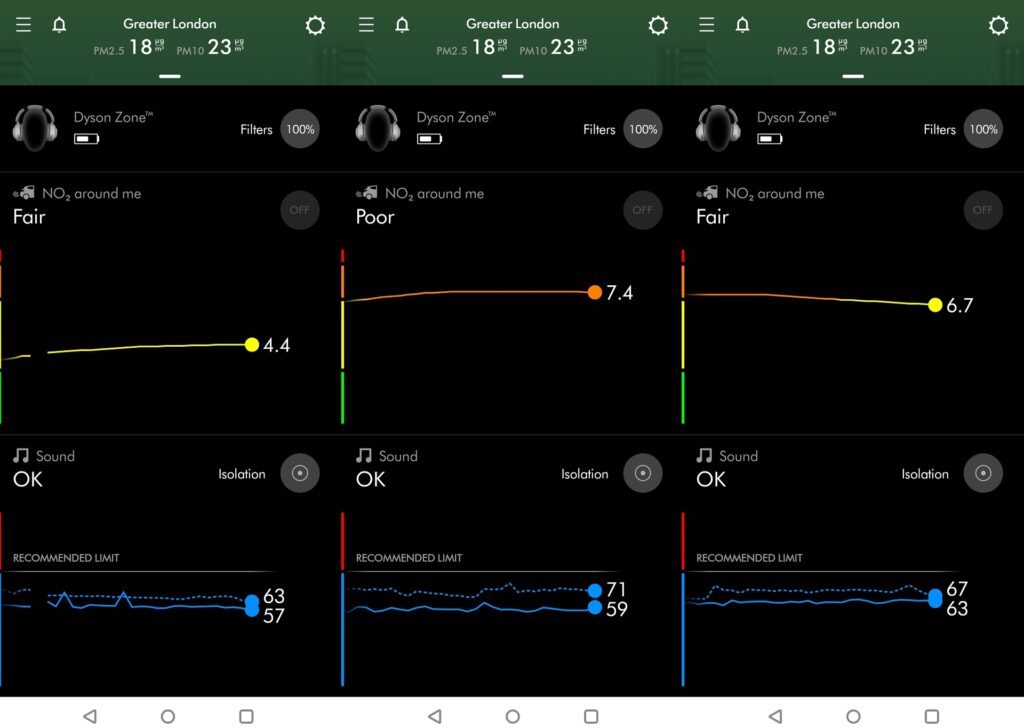
There are customisations (or ‘preferences’ as the app refers to them), which include being able to pause audio when the visor is lowered or enacting a noise limiter which limits the audio level of 85dB. Technically, anything above that can cause hearing damage.
You can manage the noise cancellation modes and the EQ options (you’re given three options in Enhanced, Bass Boost and Neutral) but no custom EQ that you can create yourself. The app itself is easy enough to use, though some aspects – such as the EQ options – are squirrelled away. The app can, on numerous occasions, not recognise the headphones on start-up, which in my experience required turning the headphones on and off again.
Sound Quality
- Balanced, neutral audio
- Very quiet at normal volume
- EQ options to alter frequency response
Let’s be honest, Dyson doesn’t have a pedigree in the audio market, but to quote Mark Watney from The Martian, the approach they’ve taken here is to science the s**t out of these headphones. I’d say it’s an approach that’s worked well.
The Dyson Zone packs 40mm neodymium drivers that are angled to provide a more natural soundstage by firing audio towards the ear. This is a similar method that Bowers & Wilkins (a brand with a much bigger audio pedigree) have deployed with their Px7 S2 and Px8 headphones. With a THD (Total Harmonic Distortion) of less than 0.08% @94dB @1kHz, there’s very little signal noise with the Dyson Zone.
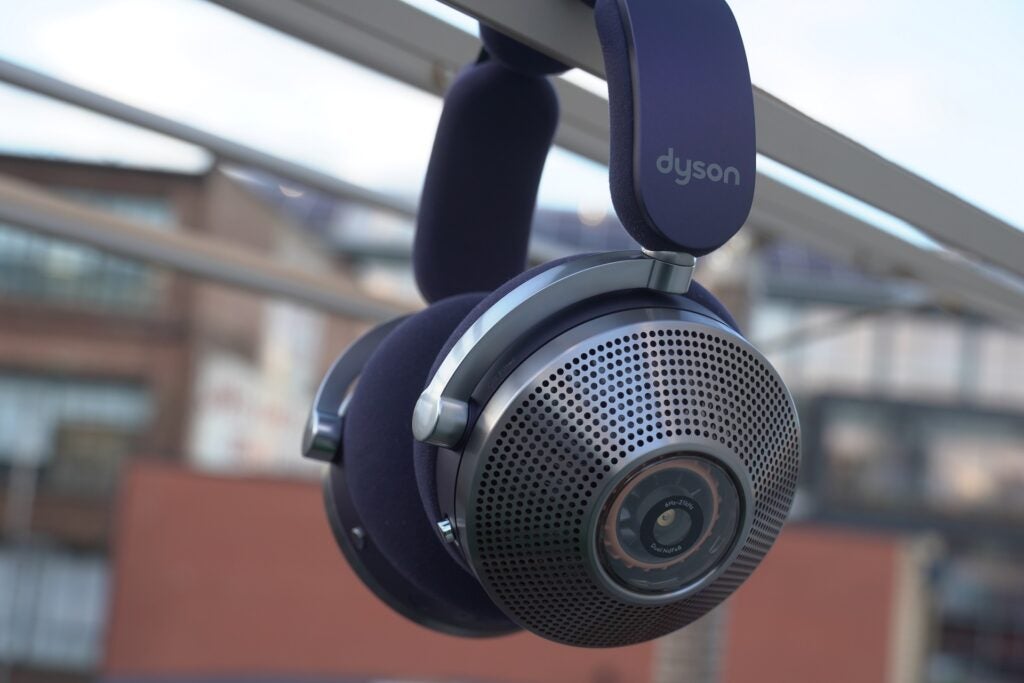
The frequency range covers 6Hz – 21kHz – you can even see this written on the earcups – though while the top-end figure sounds just about believable, the low-end is less so if you’re listening in the headphone’s Neutral EQ. Bass in tracks like Bankhead, Beyonce’s Déjà vu, and Katy B on a Mission hits with weight, but there’s not that same sense of richness or depth that you get from say, the WH-1000XM5, even with Bass Boost EQ applied.
That’s not to say the low frequencies are rendered in disappointing fashion, but the Zone’s overall performance is one that’s balanced, tasteful, and rather polite across the frequency range. Like Switzerland, the Dyson Zone aims to be neutral, avoiding the crispness of the Bose QuietComfort 45 and offering a sound that’s intended to be a faithful reproduction of what you’re listening to. They remind me most of the Master & Dynamic MW75 – comparing the two, there’s not a great difference between them with Bass Boost on, but I would say the MW75 shades, especially when the Zone is in its Neutral EQ mode.
The soundstage is expansive in its description, though its sense of dynamism is not as strong as I’d hoped. They’re not the most expressive, communicating the difference in quiet and loud or transitions between the two whether that’s in minor or major scale. That keenly observed balance does rob them of a sense of excitement, variation, or just that sense of propulsion with energetic parts of a track.
They are also very quiet at their normal volume levels. Pump up the volume and they become a much more confident performer, but it’s surprising just how reserved they are. They’re polite in the extreme.
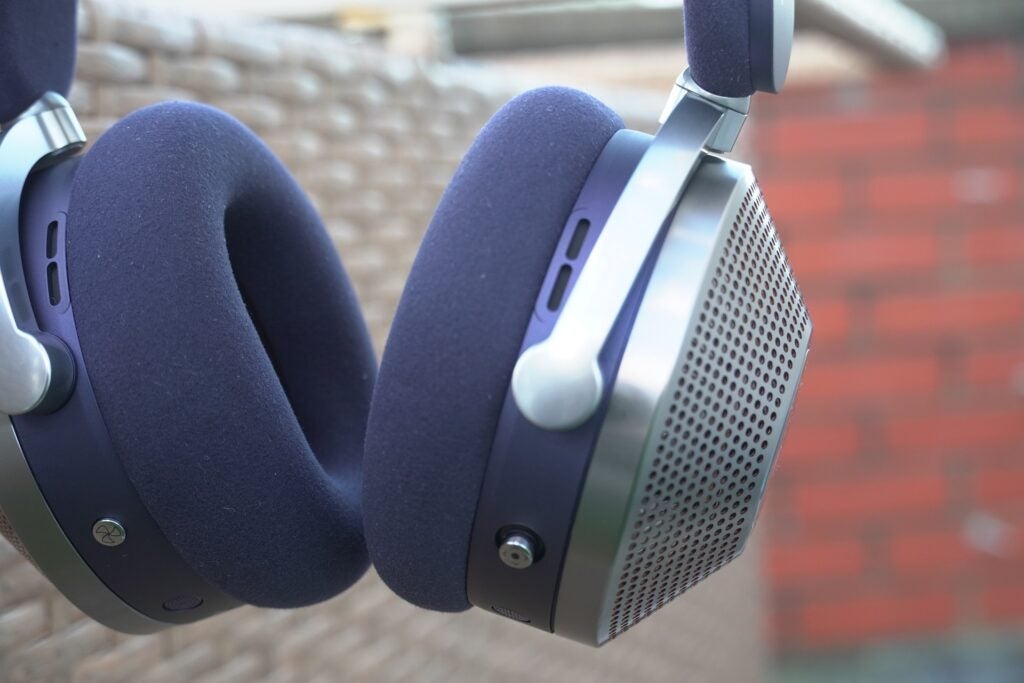
Push the volume up and there’s very good clarity, detail and neutrality given to high frequencies. Perhaps not the brightest performance, but the shine given to the bells throughout Shuggie Otis’ Strawberry Letter 23 brings them out well.
The midrange is not the most exciting, but that perhaps escapes the point. What it is, is balanced in tone across a variety of genres from soul to pop to rock, detailed in terms of definition and consistent in how it handles vocals.
Whether it’s Marvin Gaye in I Heard It Through the Grapevine to Christina Aguilera in Without You, or Zendaya and Labrinth in All For Us, there’s a smooth definition and clarity that ably captures the ‘voice’ of the performer. There’s no colour or richness to be found here, though again, a little dynamism wouldn’t go amiss.
Latest deals
Should you buy it?
If you like fresh tunes and fresh air: It may surprise some, but the Dyson Zone sound very good, up there with some of the best headphones around their price point. And then of course there’s the air filtration unit bringing in that clean oxygen.
If you want something more portable: The Dyson Zone are heavy, they’re bulky, and not exactly the most portable pair either when transporting them. The visor doesn’t help either, and the case the headphones come in is big.
Final Thoughts
After a month of using the Dyson Zone, it’s clear there’s some contradictions that’s causing them some conflict. Yes, they’re headphones, but they’re also an air filtration system and the latter impacts the former and vice versa.
Those fans add to the weight, so even when you’re not wearing them you can feel the Dyson Zone resting on your head. Then when you’re listening to music with the visor on, you can hear the fans whirring in the background, which can be distracting.
But here’s the rub. They’re a very good pair of headphones and the air filtration system works. Many people I’ve asked to wear the headphones liked the cool air coming through, as well as the strength of the noise-cancellation. The concept works in tackling noise and air pollution.
As a first attempt at something completely different, they are a success but they’re also not for everyone. If Dyson does attempt a second pair, slim down the bulk and weight and make the visor look less weird, I can see people being more receptive to the idea. If you’re looking at these headphones, you have to be all in to get the most out of them.
As strange as they look, you’ve got to applaud Dyson for bringing a new idea to the market. I’m genuinely intrigued as to whether it’ll take off.
How we test
We test every set of headphones we review thoroughly over an extended period of time. We use industry standard tests to compare features properly. We’ll always tell you what we find. We never, ever, accept money to review a product.
Find out more about how we test in our ethics policy.
Tested for a month
Tested with real world use
FAQs
The Dyson Zone visor can be detached, so you only have to wear it when you feel the need to do so.
Full specs
Sustainability
Trusted Reviews’ holds the fact that global warming is not a myth as a core value and will continuously endeavour to help protect our planet from harm in its business practices.
As part of this mission, whenever we review a product we send the company a series of questions to help us gauge and make transparent the impact the device has on the environment.
We currently haven’t received answers to the questions on this product, but will update this page the moment we do. You can see a detailed breakdown of the questions we ask and why in our sustainability page.

